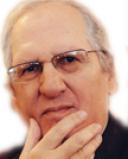Anger
Anger Mismanagement
There's a vital distinction between appropriate and inappropriate anger.
Posted January 26, 2009 Reviewed by Ekua Hagan
Key points
- When one is pathologically angry due to chronic dissociation or repression of appropriate anger, then almost anything can evoke irritability.
- Compassion cannot always "crowd out" pathological anger.
- Emotionally accepting one's anger is the beginning of becoming more compassionate toward others.
This post is a slightly belated response to Dr. Stosny's most recent contribution to what I hope readers will find a helpful, informative, and stimulating extended discussion and debate about anger: What it is and how to deal with it, in both therapy and life.
Anger, despite its primitive and primal nature, is possibly the most complicated of all human emotions to manage, especially in our "civilized" society. True "anger management" must help people perceive the difference between appropriate and inappropriate anger or rage.
What is neurotic, pathological, or inappropriate anger? Where does it come from? How does anger, a natural, necessary, instinctual, existentially appropriate affect become so problematic? What is this insidious and dangerous process secretly underlying so many different psychiatric disorders and evil deeds? And how can such anger mismanagement be most effectively minimized or reversed?
As I mentioned in my previous comments, for me, the key task here is differentiating between existential, normal, or healthy and neurotic, inappropriate, or pathological anger. Dr. Stosny appears to acknowledge that not all anger is problematic or inappropriate. The vital distinction between appropriate and inappropriate anger, or even rage, is, to me, very much to the point.
When Dr. Stosny surprisingly states, "It is not the therapist's job to inform the client about the 'appropriateness' of his anger," I strongly disagree. Helping patients recognize precisely that distinction is, in my view, absolutely central to the therapeutic process, and very much part of the psychotherapist's professional responsibility.
This is, in part, needed because, as Stosny notes, the patient is hard put to make this distinction, especially when in the raging, irrational heat of battle. It is typically in reflecting on such angry outbursts retrospectively in treatment that inappropriate anger—and often the fear, guilt, and shame about it—are recognized.
Dr. Stosny further states that "the more you experience (or repress/suppress) anger, the more anger you'll experience (and repress/suppress)." Here I completely concur. But more on psychological than neurological grounds. Chronic repression or suppression of anger or rage—anger mismanagement—can only lead to a vicious cycle of escalating anger. The anger festers and becomes pathological. But the anger has become pathological and problematic precisely due to its chronic denial. Hence the ultimate futility and danger of chronic repression or suppression of anger or rage.
Moreover, if what the patient is experiencing and expressing is inappropriate, pathological anger or rage, then yes, the more he or she indulges in it, the more likely it is to occur. Why? Because the appropriate or healthy anger underlying this acting out has not been identified and consciously addressed.
In such cases, "validating" the inappropriate anger on the therapist's part is, well....inappropriate. We have to distinguish between "validating" inappropriate anger and consciously acknowledging it. To provide a simplistic psychodynamic example, when patients are flying off the handle at their mates inappropriately, what might need validation is that they are really angry with their mother or father, and unconsciously transferring that feeling toward their wife or husband. Now, what needs validation is the fact that they are still angry with one or both parents, and the legitimate reasons they were and still are so angry. (Such childhood anger or rage generally stems from narcissistic wounding, as I've discussed in previous posts.) Without pointing this out to patients, they remain unconscious of the original source of their anger, perceiving and relating to their significant other based on old feelings from infancy, childhood, or adolescence.
For example, Breuer and Freud's (Studies on Hysteria, 1895) "hydraulic" or "steam engine" model, as called by some, was based on the clinical observation that certain patients recovered through catharsis or "abreaction" of repressed or dissociated affect and memory. Catharsis is a term derived from the Greek word katharsis, sometimes used synonymously for "therapy," and refers historically to any purgation of the emotions that promotes spiritual renewal or psychological healing. But this observation does not necessarily validate (nor do I) the "ventilationist" approach to pathological anger in therapy, which Rollo May once described as being more "masturbatory than procreative."
For me, treating anger problems is more about becoming conscious of the roots of anger while simultaneously expressing it more creatively, as opposed to ventilation, though verbalizing anger can sometimes be part of that process in the consulting room. At such times, it would be inaccurate to suggest, as Stosny seems to, that it is the therapist who is "making" the patient angry. The anger is already present. The therapist, recognizing and valuing the potential healing power of the patient's anger, merely encourages its acknowledgment and verbalization. Pathological anger is indeed a major impediment to healing, which is precisely why it must be directly addressed for healing to fully proceed.
Dr. Stosny correctly refers to my own therapeutic approach to anger and rage (Existential Depth Psychology) as being influenced by the revolutionary psychological discoveries of Breuer and Freud during the late 1890s, theories that were eventually widely scientifically accepted as the very foundation of psychoanalytic psychotherapy or depth psychology. But it also has roots as far back as ancient Greece, and the classical concept of the daemonic.
Existential psychologist Rollo May (1969) defined the daemonic as "any natural function which has the power to take over the whole person. Sex and eros, anger and rage, and the craving for power are examples." Anger is daemonic, in the sense that, especially when chronically repressed, it accrues the power to possess and drive us into destructive behavior, and yes, as Dr. Stosny says, to violate our "deepest values." (This is what I call the "possession syndrome.")
As regards anger, we suffer in our culture from a similar attitude as the Victorians took toward sexuality in Freud's day. We are collectively taught that anger is something negative, improper, dangerous, unspiritual, useless, and evil. And hence, shameful. For many, anger is associated with fear, anxiety, guilt, and shame. This is why we tend to repress or suppress it starting from childhood. And this negative attitude toward anger and resulting repression is paradoxically the source of most anger problems.
Dr. Stosny argues from his own paradigm that the problem resides in "how the brain adapts to its environment," and that "neurons that fire together wire together, i.e., the more you express anger (even when you don't get it validated by an expert), the more often you will get angry." Yes, but only when what is being "validated" is inappropriate or pathological anger. Neurology and psychology are two different vantage points for perceiving and explaining the same phenomenon. When one is pathologically angry due to chronic dissociation or repression of existential or appropriate anger, the threshold for anger is gradually diminished. Almost anything can then evoke irritability, annoyance, anger, or even rage—all inappropriate overreactions to the current circumstance.
What Stosny cites is a reductionistic, mechanistic, neurobiological model of the phenomenon of anger currently a la mode in mainstream psychiatry and psychology. But I would remind Dr. Stosny and readers that so-called scientific theories fall in and out of favor. And that a lack of modernity or popularity does not necessarily negate a theory's power, relevance, or validity. Any scientific theory or treatment that merely suppresses or avoids the patient's anger is an iatrogenic form of anger mismanagement.
But despite these admittedly profound disagreements, I think we share some common ground on the subjects of compassion and forgiveness. Clearly, compassion is a preferable reaction (though I wouldn't necessarily call it a defense mechanism) to pathological (but not appropriate) anger. Traditionally, compassion is the hallmark of true religiosity or spirituality, as seen in the plea of Jesus from the Cross: "Forgive them, Father, for they know not what they do." And I like what Stosny says about "crowding out anger with more compassion." But I find it rather naïve and unrealistic to believe that "It is so much quicker and easier—with far less iatrogenic risk—to help clients strengthen their capacity for compassion (with his motivation to heal and improve) rather than work through their anger." This is almost a pseudo-Buddhistic notion reminiscent of the following complaint by one frustrated and misguided Buddhist practitioner: "I've been meditating for 30 years. And I'm still angry!"
Compassion cannot always "crowd out" pathological anger. Dealing with anger problems requires hard work, courage, and commitment. We need not be ashamed of feeling angry. Anger is an inescapable aspect of human experience. But learning to be more compassionate toward oneself and the underlying roots of one's pathological rage--emotionally accepting one's anger and the frustration, fear, or pain that originally led to it—is the beginning of becoming more compassionate toward others. And having more compassion for others can lead to feeling less fearful, frustrated, and angry in the present. And yes, perhaps even to forgiveness.




